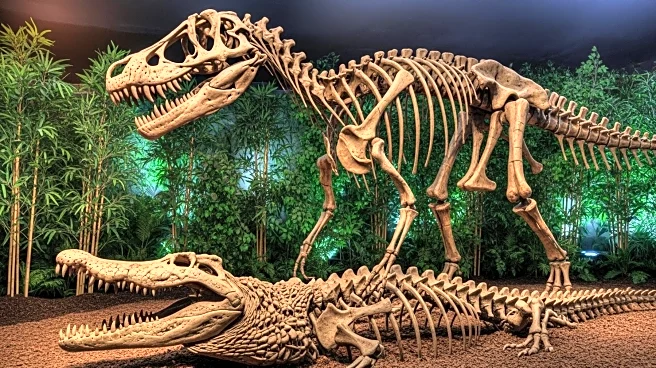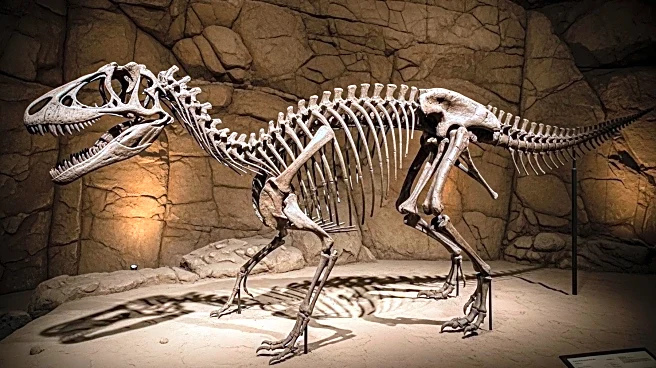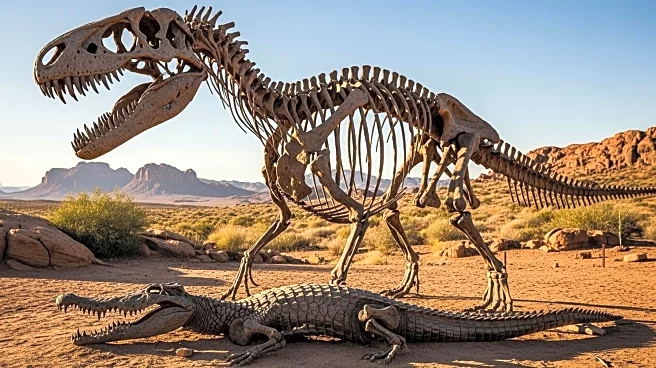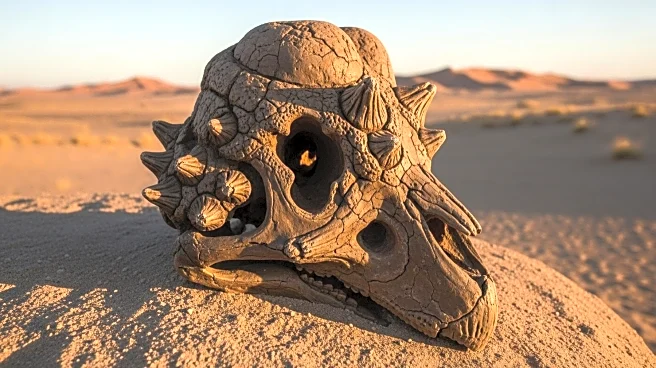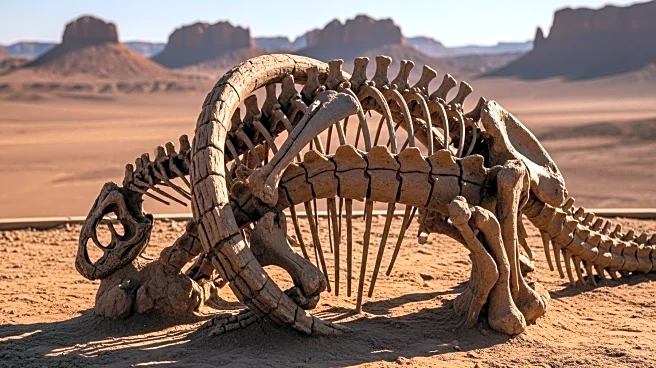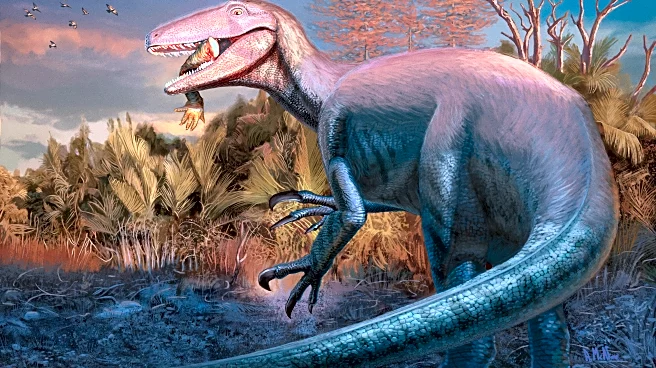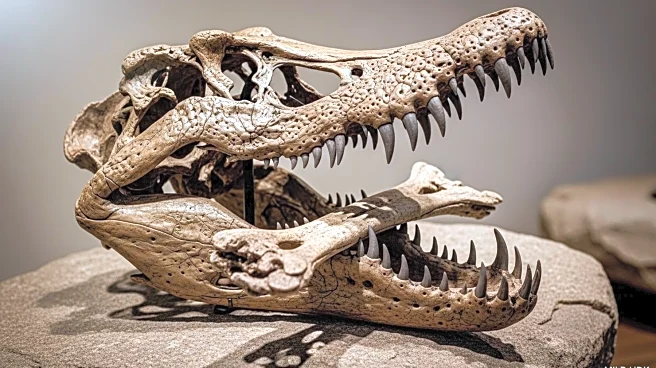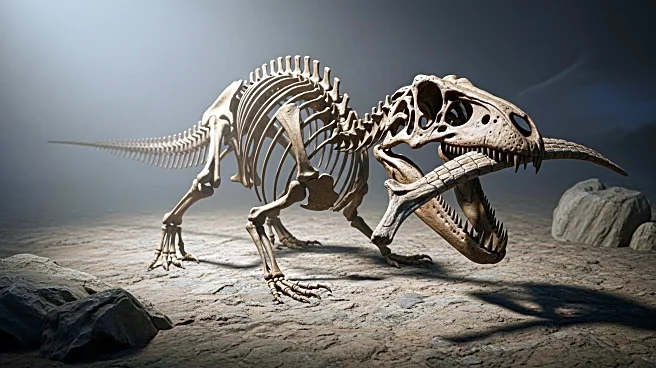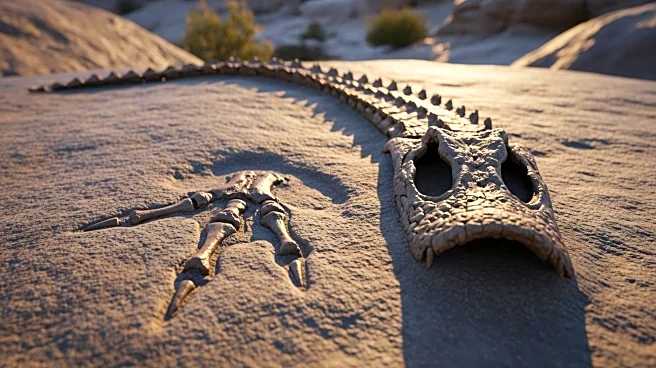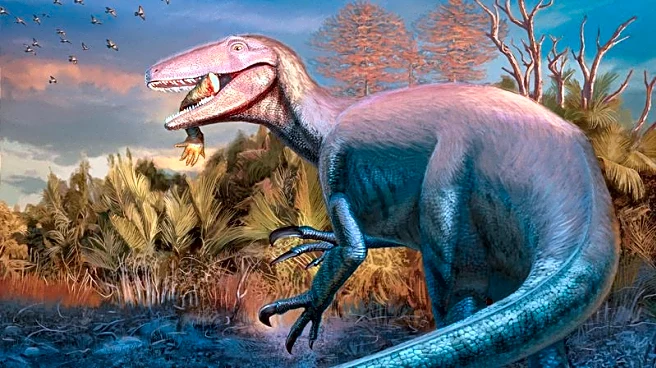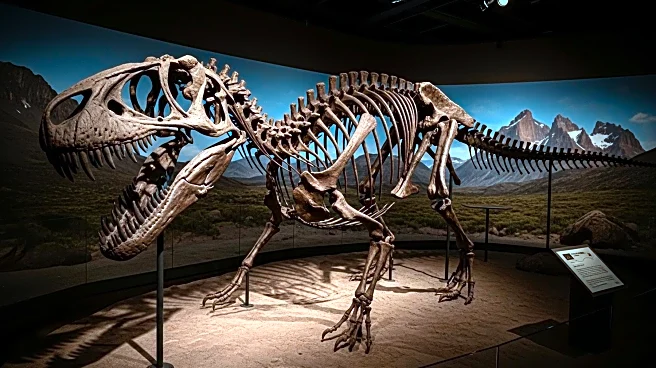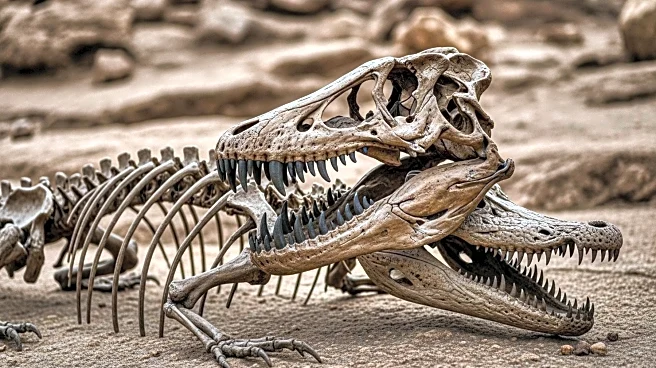What is the story about?
What's Happening?
A new species of apex predator dinosaur, Joaquinraptor casali, has been discovered in Argentina, fossilized while consuming a crocodile-like creature. This 23-foot megaraptoran lived during the Late Cretaceous period, approximately 66 to 70 million years ago. The discovery includes a remarkably complete skeleton, featuring a skull, arm, leg, and tail bones, along with the arm bone of a prehistoric crocodile preserved in its jaws. The findings, published in Nature, suggest that megaraptorans were the dominant predators in central and southern Patagonian ecosystems towards the end of the Cretaceous. The dinosaur was named by lead scientist Lucio Ibiricu in honor of his late son Joaquin.
Why It's Important?
The discovery of Joaquinraptor casali provides significant insights into the evolutionary history and ecological role of megaraptorans, a group of dinosaurs known for their massive claws and predatory capabilities. This finding fills a major gap in paleontological records by offering one of the most complete skeletons of megaraptorans, enhancing understanding of their dietary preferences and feeding strategies. The research contributes to the broader knowledge of dinosaur biodiversity and predator-prey dynamics during the Late Cretaceous period, offering clues about the ecosystems that existed before the mass extinction event.
What's Next?
Further analysis of the Joaquinraptor casali fossil may reveal more about the hunting strategies and ecological interactions of megaraptorans. Researchers might explore the implications of this discovery on the understanding of dinosaur extinction patterns and the evolutionary timeline of predatory dinosaurs. The study could prompt additional excavations in Patagonia to uncover more specimens and refine the understanding of megaraptoran distribution and diversity.
Beyond the Headlines
The naming of Joaquinraptor casali highlights the personal connection between scientific discovery and human experience, as Lucio Ibiricu commemorates his son through this significant paleontological find. This gesture underscores the cultural and emotional dimensions of scientific work, illustrating how personal narratives can intersect with academic achievements.
AI Generated Content
Do you find this article useful?
